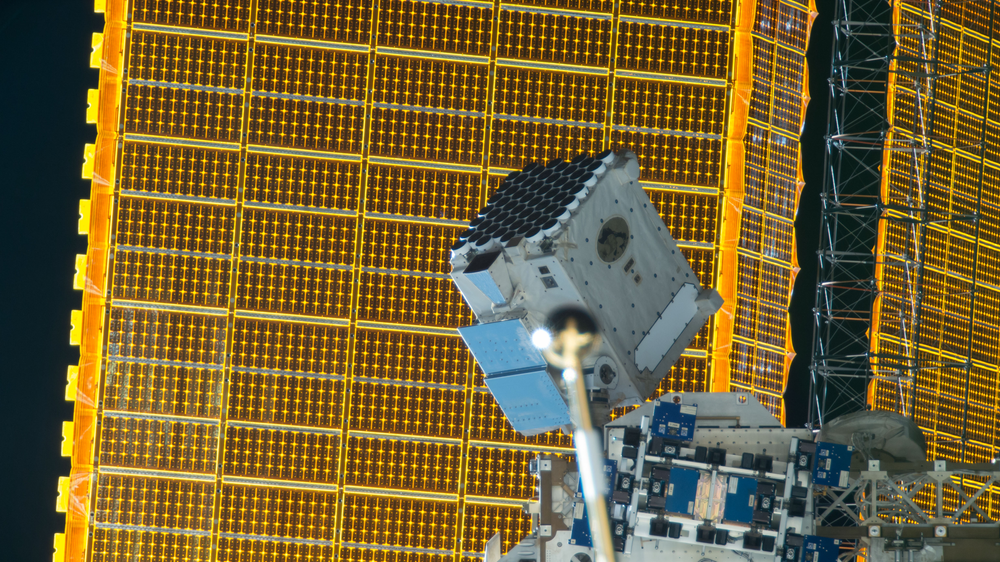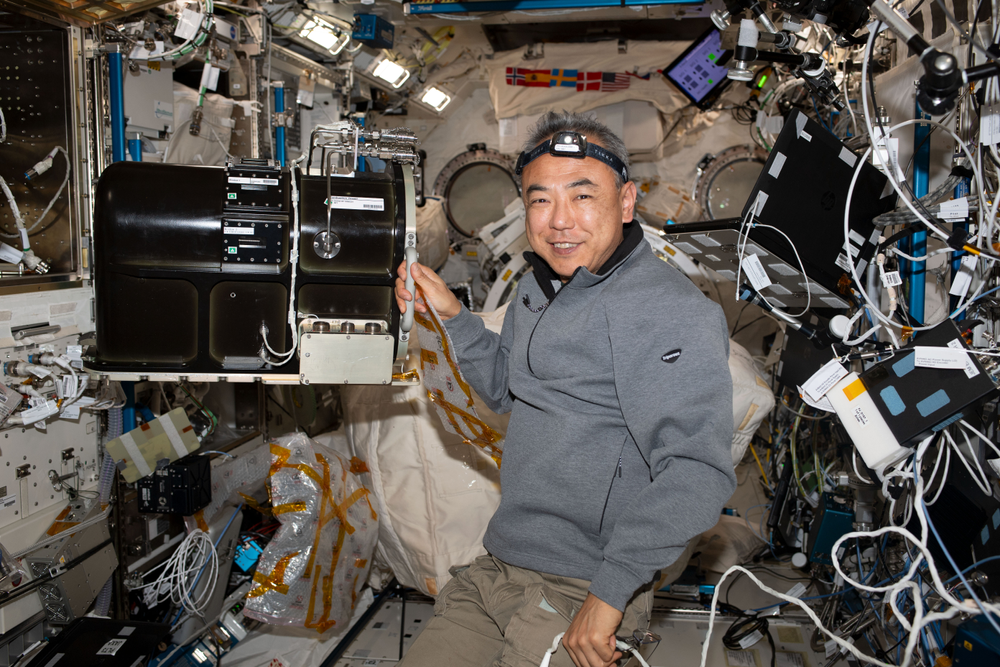Station Science Top News: Dec. 8, 2023
Top-tier* result: Researchers monitoring an outburst of the pulsar PSR J1846-0258 in August 2020 observed behaviors similar to those during a previous outburst in 2006. Continued X-ray monitoring of J1846−0258 and expanded spectral coverage are crucial to understanding this star’s true nature and place in neutron star evolution.
Ultra-dense pulsars or neutron stars emit X-ray radiation that does not penetrate Earth’s atmosphere. NASA's NICER (Neutron star Interior Composition Explorer) collects this radiation from low Earth orbit to study the structure, dynamics, and energetics of these objects. The instrument continuously monitored J1846-0258 starting more than 3 years before the 2020 outburst up until more than a year later. This unique pulsar appears to have a dual nature, usually behaving like a rotation-powered pulsar (RPP) but sometimes like a magnetar. It could be an RPP that is becoming a magnetar, or a magnetar masquerading as an RPP. An RPP loses a large amount of energy with rotational deceleration, magnetars are neutron stars with extremely power magnetic fields. The behavior of this source suggests there is a continuum of neutron star types between RPPs and magnetars.

View of the NICER (Neutron star Interior Composition Explorer) payload, attached to the EXpedite the PRocessing of Experiments to the Space Station (EXPRESS) Logistics Carrier-2 (ELC-2) on the International Space Station's S3 Truss. Photo was taken by the ground-controlled External High Definition Camera 1 (EHDC1). Credit: NASA
***
Top-tier* result: Researchers present observations of daily cosmic positron flows from 11 years of data collected by the International Space Station’s Alpha Magnetic Spectrometer - 02 (AMS-02). These types of data improve understanding of cosmic rays in our solar system, the giant bubble that solar wind forms around the Sun and planets.
Crew members traveling to the Moon or Mars need protection from cosmic rays, high-energy radiation from distant stars, and galaxies that can be harmful to human health. AMS-02 detects whether incoming particles from cosmic rays are positively or negatively charged, which helps scientists determine the nature of these particles. Understanding where cosmic rays come from and how they move through space could help scientists develop ways to protect crews on future missions.
***
Researchers report enhanced flammability of filter paper in microgravity. After the initial flame went out, a vapor cloud formed that reignited the fire. This accumulation of a combustible mist could pose a potential fire hazard. Understanding how different materials burn in microgravity helps researchers identify such hazards and better protect crew members on future missions.
The JAXA (Japan Aerospace Exploration Agency) Fundamental Research on International Standard of Fire Safety in Space – Base for Safety of Future Manned Missions (FLARE) investigation examines burning of various solid fuels under different conditions in microgravity, which significantly affects combustion phenomena. Results could significantly improve fire safety aboard spacecraft on future missions and support better ways to evaluate and reduce fire hazards on Earth.

View of JAXA (Japan Aerospace Exploration Agency) astronaut Satoshi Furukawa during installation of Solid Combustion into Multi-purpose Small Payload Rack (MSPR) Work Volume. Credit: NASA/Jasmin Moghbeli
***
Microgravity reduces muscle strength in C. elegans roundworms, a result that directly links neuromuscular strength loss with increased stress response and reduced expression of certain gene pathways. This finding paves the way for testing of pharmaceutical and nutritional countermeasures for space-induced loss of muscle strength.
Previous experiments showed reduced expression of key muscle genes in C. elegans worms in microgravity. Determining Muscle Strength in Space-flown Caenorhabditis elegans (Micro-16) looked at how these spaceflight-dependent changes in gene expression are linked to muscle function. To test muscle strength, researchers developed a device containing tiny deformable pillars that are deflected by a worm crawling through the device. This deflection is captured via imaging and translated into force measurements. Loss of muscle mass and strength present a major challenge for future space exploration missions, and this work supports development of countermeasures to that loss.
*published in a journal ranked in the top 100 by Clarivate, a global analytics firm.







